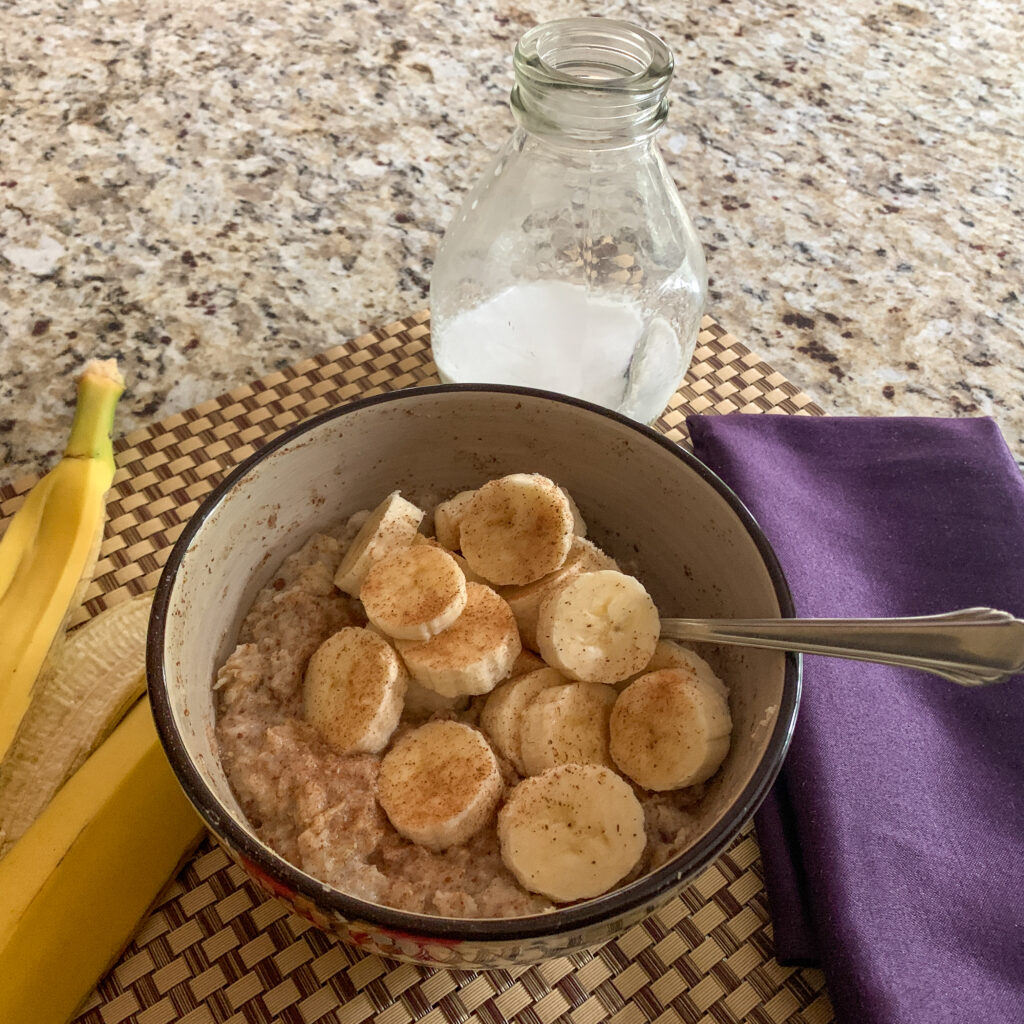That’s Tasty!
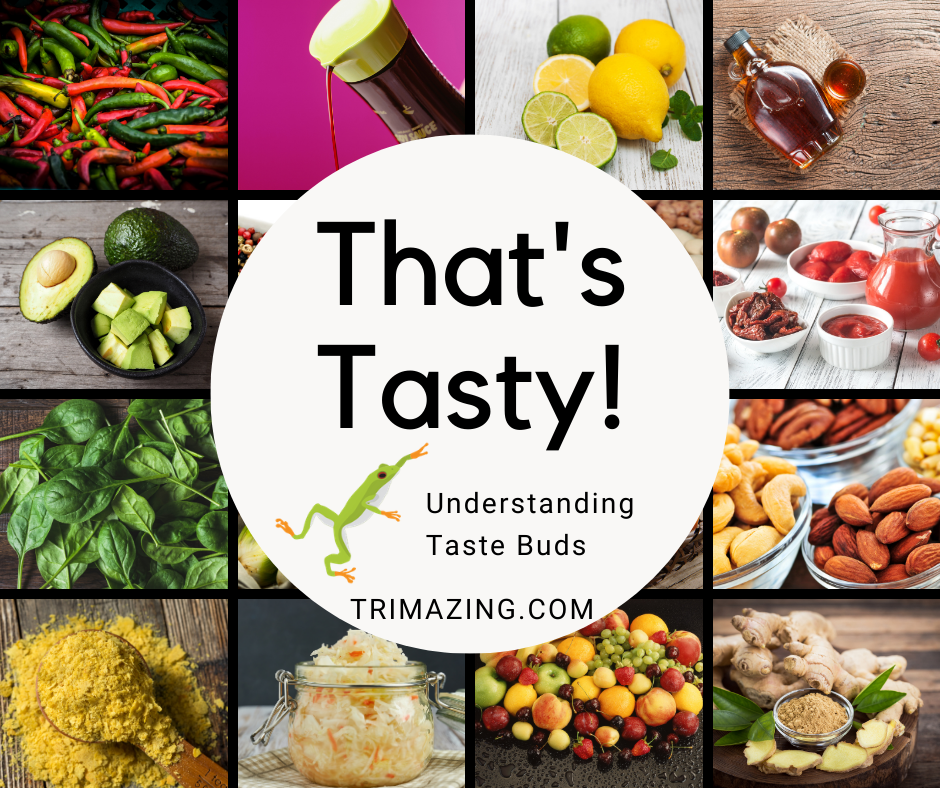
Let’s talk about taste. We use it every day, but do we really understand it?
Physiology of taste
Our sense of taste comes from bundles of cells on our tongues called taste buds. We have between 5,000 to 10,0000 of them. While taste buds are too small for us to see with the naked eye, they are clustered into groups called papillae, which are the bumps you see when you look at your tongue in the mirror. Our taste buds sample what’s in our mouths and send signals to our brain through nerves.
But it’s not just about taste buds. Our ability to discern many different flavors is tied to our sense of smell. Receptors in our nose carry signals to the brain that further communicate what we are tasting. In fact, smell can attribute up to 80% of our ability to taste. This is why food doesn’t taste good to us when we’re stuffed up.
Taste Map Debunked!

The tongue map is incorrect! Image by Cindy Thompson, Trimazing.com
Remember the map of the tongue with salty at the tip, sour at the sides, etc.? Well turns out it’s wrong. We do have individual taste receptors for each of the five or six tastes, but they’re bundled together in taste buds and scattered throughout your tongue. You taste flavors all over your tongue.
Our Tastes Change!
Like all of our cells, taste bud cells die off and are replaced with new ones all the time. Taste buds regenerate every two weeks, however less are replaced as we age, starting about age 40, leading to bland tastes or changes in taste preferences as we get older.
There are some genetic influences for taste, like our preference for sweet, cilantro tasting soapy to some, and others being unable to taste truffles, but mostly our taste preferences come from exposure. Because our taste buds turn over every two weeks, we can actually adjust our taste preferences very quickly. This is an important human adaptation that helped prevent starvation when food supplies changed, protects a developing fetus from toxins (the taste of bitterness, usually associated with poison, is increased during pregnancy), and encourages eating patterns (human infants are attracted to sweet, encouraging breast feeding of naturally sweet breast milk).
We can use this to our advantage to wean ourselves off of sugar and fat and onto fruits and vegetables. Simply give new tastes a couple of weeks and you’ll adapt to these new flavors. Like sweetened coffee but want to cut sugar? Simply start reducing the amount of sugar you add to your coffee every few days and once you get to black coffee, you’ll find your new taste buds find this taste normal!
Supertasters

Your tongue affects what foods you like and hate! Image by Cindy Thompson, Trimazing.com
While being a supertaster sounds like an awesome thing, as if you are a high level sommelier, but being a supertaster can be a problem. A supertaster is someone with increased sensitivity to taste, particularly bitter. The reason? Supertasters have an increased number of taste buds on their tongue. This may be why some people just never, ever get to liking broccoli or other foods.
We have this issue in our house. My husband, Alan, is a supertaster. I could never figure out why he complained about things being too sour, too spicy, etc. when I could barely notice these flavors. Once we learned about this and tested it out, everything made sense (pun intended!). I adapt my cooking to his taste levels and simply spice up my own servings to my liking.
Curious about this in your household? You can easily test to see if you’re a supertaster!
Basic Tastes
There is some debate about how many tastes we have. The basic consensus includes: sweet, sour, bitter, salt, and umami. However, several others are often included: astringent, pungent, and fat. These last flavors are debated and may be more mechanical to how our mouths react to these properties than purely taste. All of these tastes work with and against each other to create our culinary experience.
Sweet
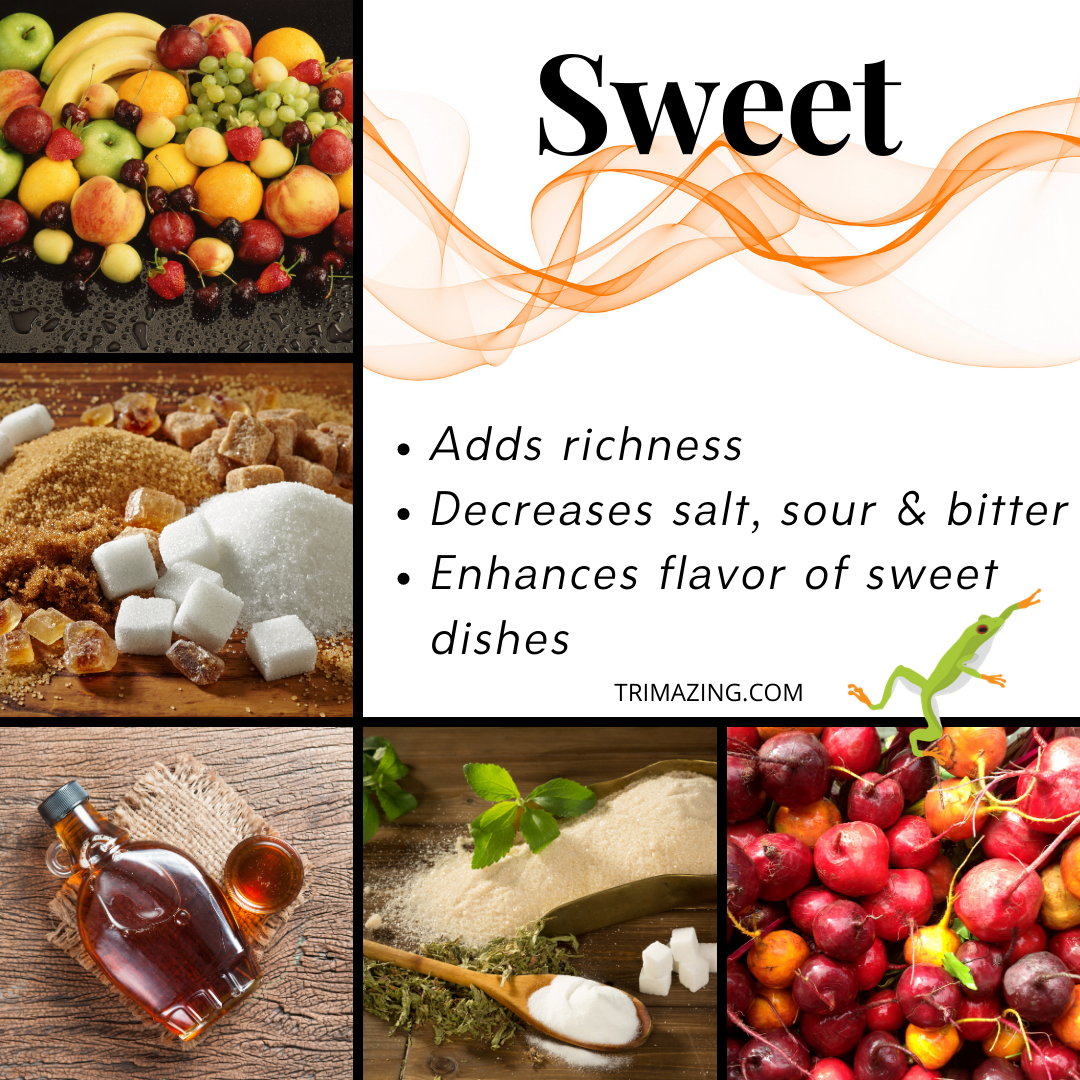
Sweet is found in:
- Fruit
- Vegetables: beets, onions
- Sugar
- Liquid sweeteners: maple syrup, agave nectar, molasses, etc.
- Stevia
Use sweet to:
- Add richness
- Decrease salt, sour, or bitter
- Enhance flavor in sweet dishes
Sour
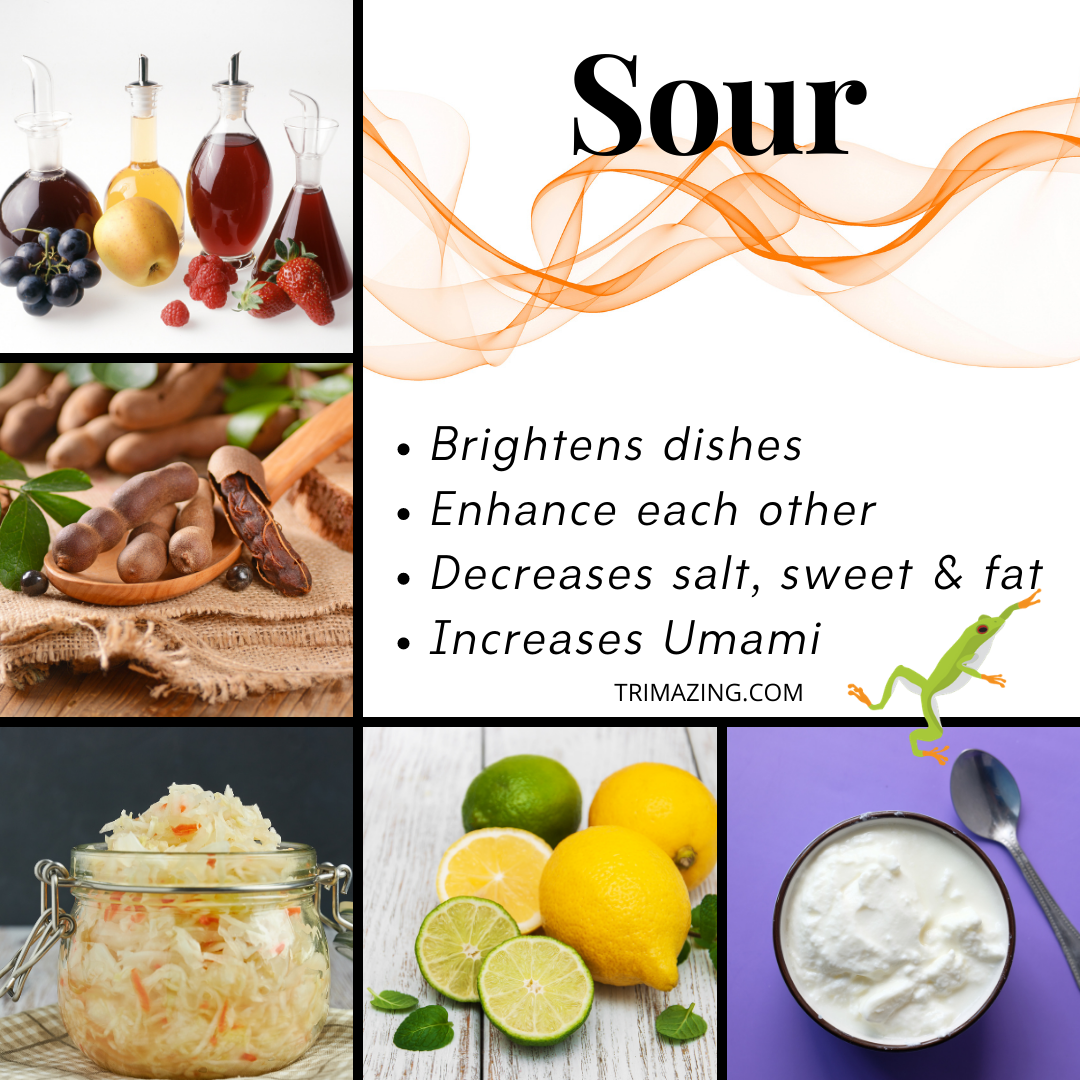
Sour is found in:
Use it to:
- Brighten dishes (try adding citrus juice or zest at the end of cooking)
- Enhance other sour flavors in a dish
- Decrease salt, sweet, and fat
- Increase umami (savoryness)
Bitter
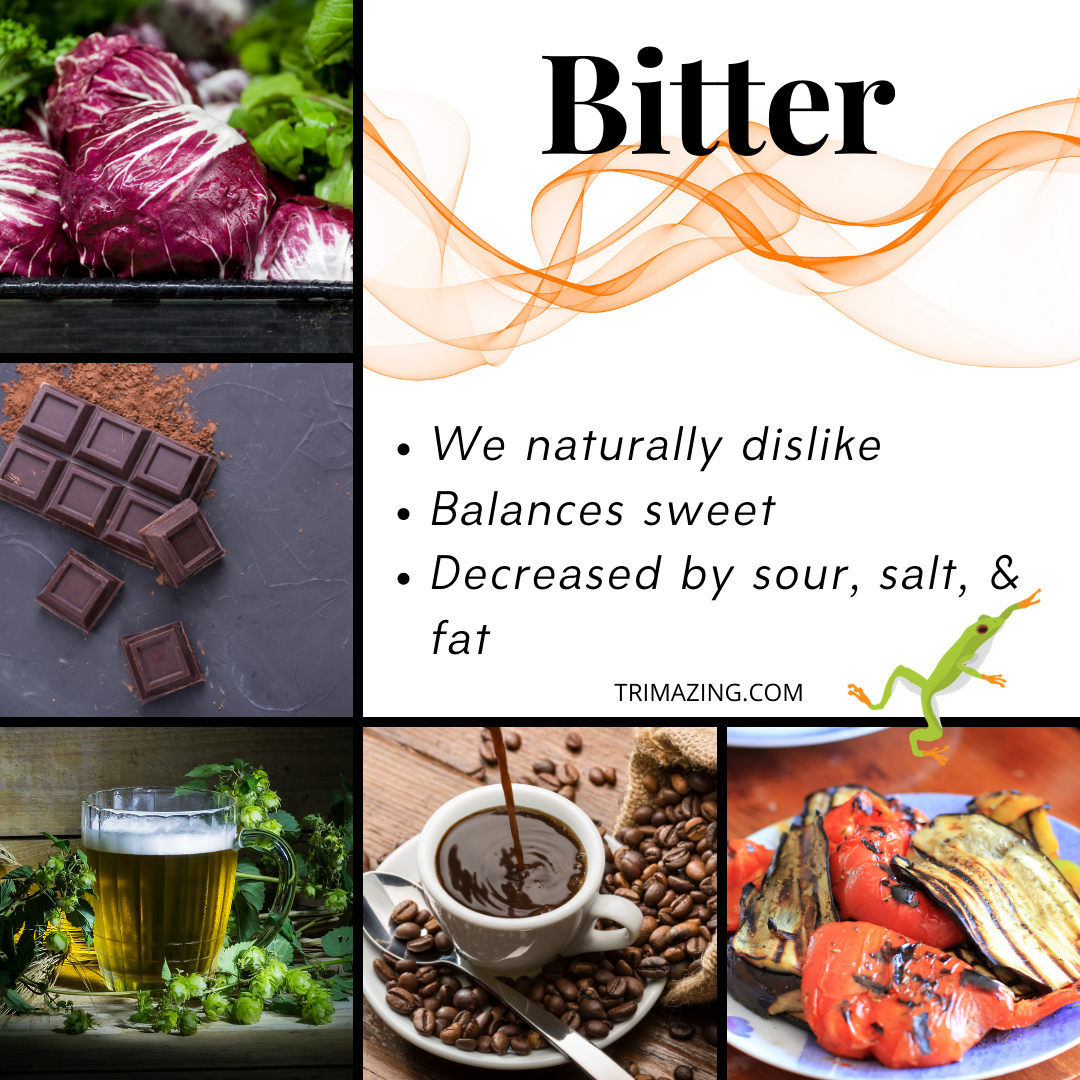
Bitter flavor is found in:
- Greens: radicchio, escarole
- Cucumbers
- Chocolate
- Spices: turmeric, fenugreek
- Coffee
- Hops
- Grapefruit
- Charred food
Use bitter in cooking to:
- Balance sweetness
To remove bitter flavors:
- Add sour, salt, or fat
Salt
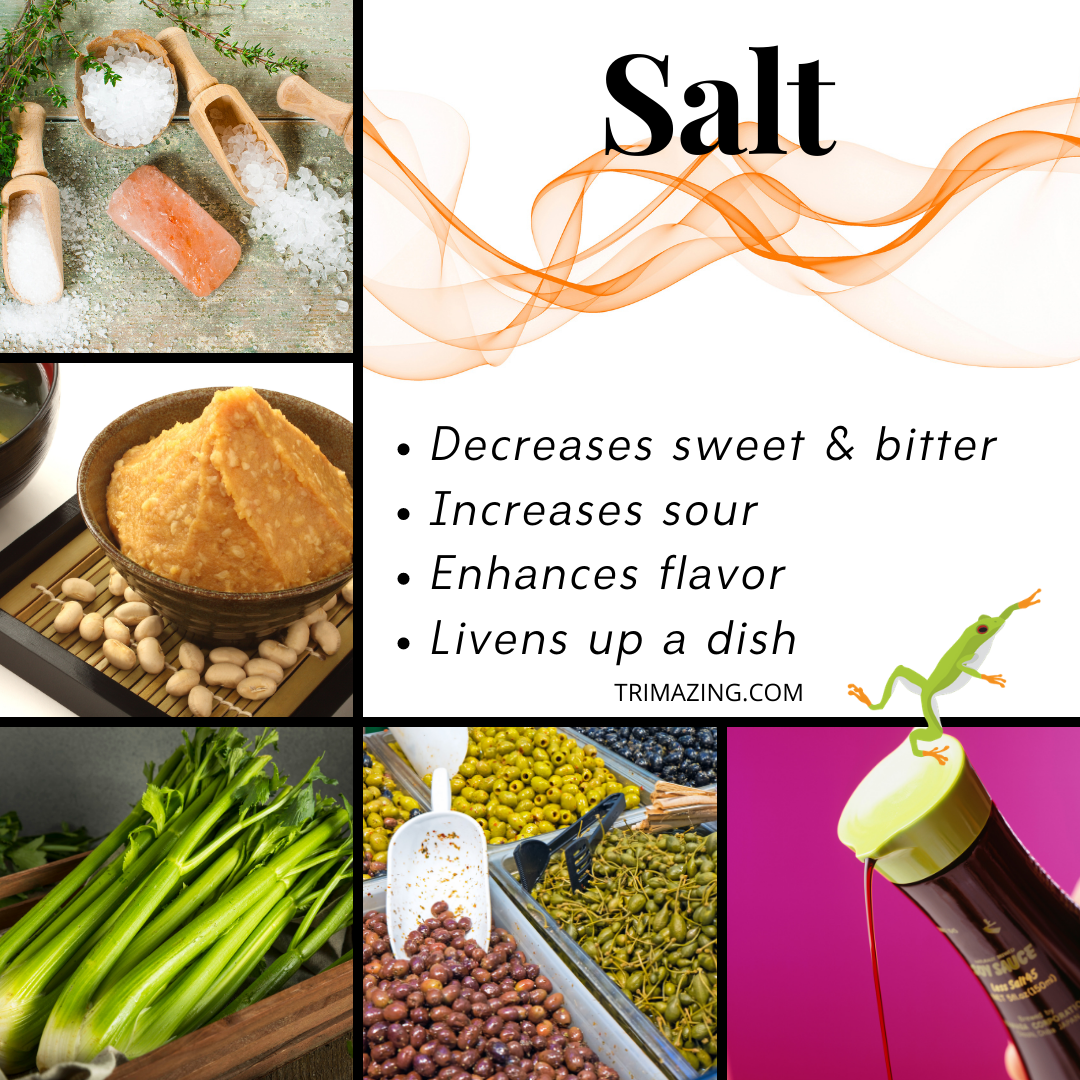
Find salt flavors in:
- Sea salt
- Soy sauce
- Miso
- Pickled foods: olives, capers
- Celery
Use this flavor to:
- Decrease sweet and bitter
- Increase sour
- Enhance flavor and aroma
- Liven up a dish
Umami (Savory)
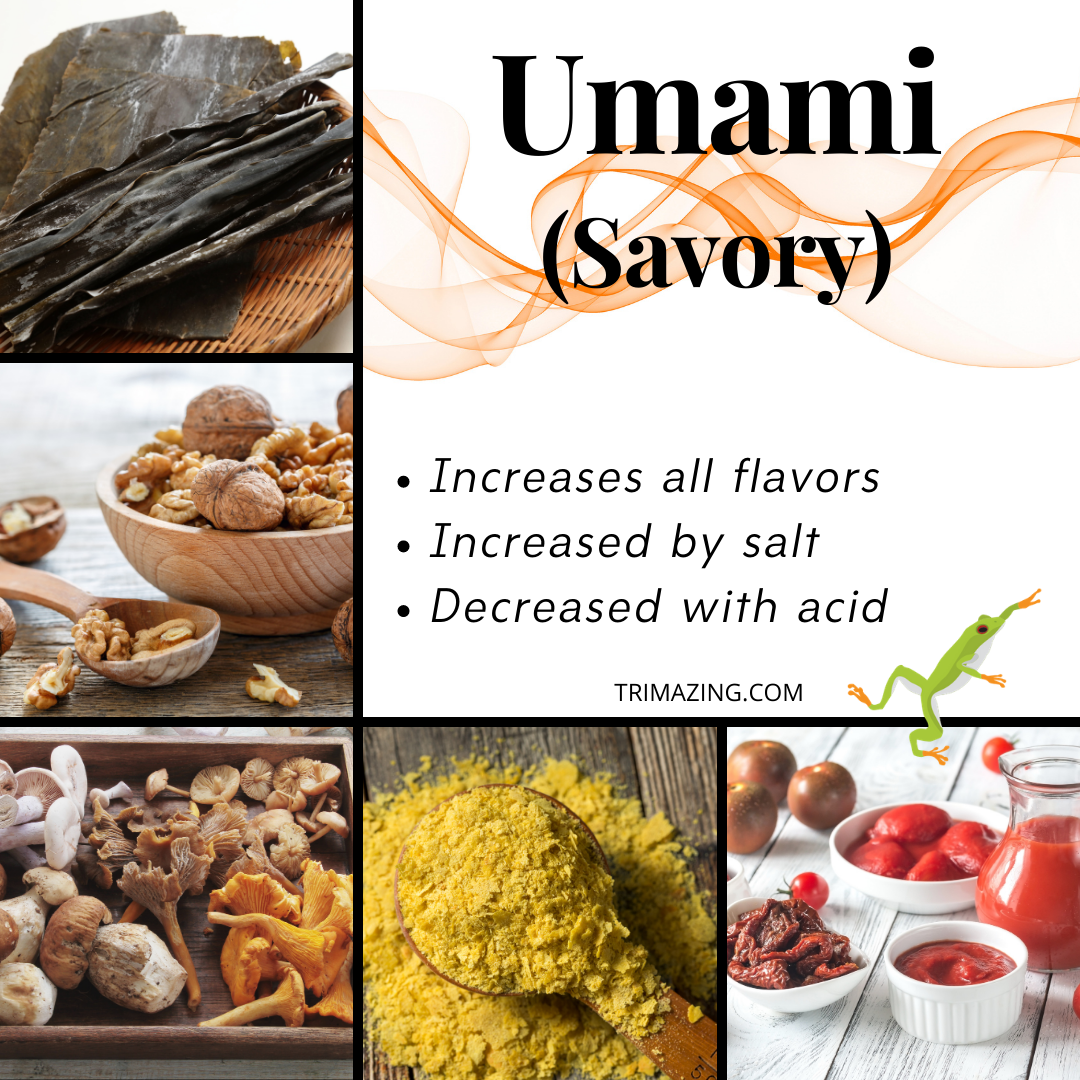
Umami is that savory flavor in food. It’s a richness found in:
- Tomatoes: Sun-dried, tomato paste, roasted, ketchup
- Sea vegetables: Dulse, Nori, Kombu, Wakame
- Mushrooms
- Roasted and browned vegetables
- Sauces: Worcestershire, Soy or Tamari, Hoisin
- Nutritional Yeast
- Miso
- Olives and capers
- Walnuts
- Broccoli
- Onions, garlic
- Bread
Use umami ingredients to:
- Increase all flavors
Note that umami changes with other flavors:
- Increased by salt
- Decreased with acid
Astringency
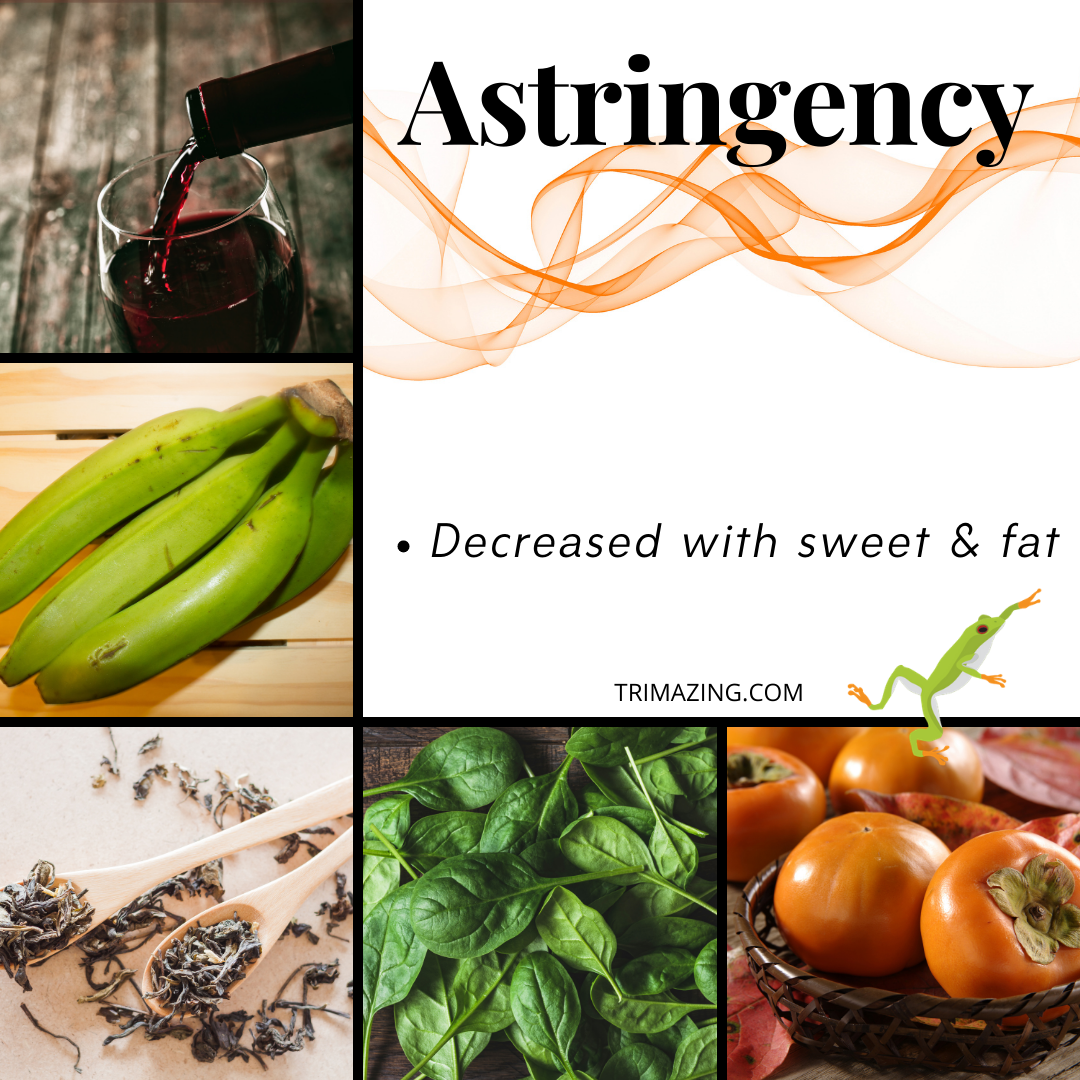
Astringency is a drying sensation in your mouth.
You’ll find this in:
- Tannins in red wine
- Fruit: unripe bananas, green apples, persimmons
- Tea
- Spinach
You can decrease this flavor/sensation with sweet and fat
Pungent (Heat)

Pungency is found in more than just chili peppers. Heat comes from:
- Ginger
- Garlic
- Peppercorns
- Horseradish
- Mustard
- and Chiles
Use pungent ingredients to:
- Bring out the flavor of other spices (cinnamon, cardamom)
- Decrease richness
- Enhance all other flavors
Fat
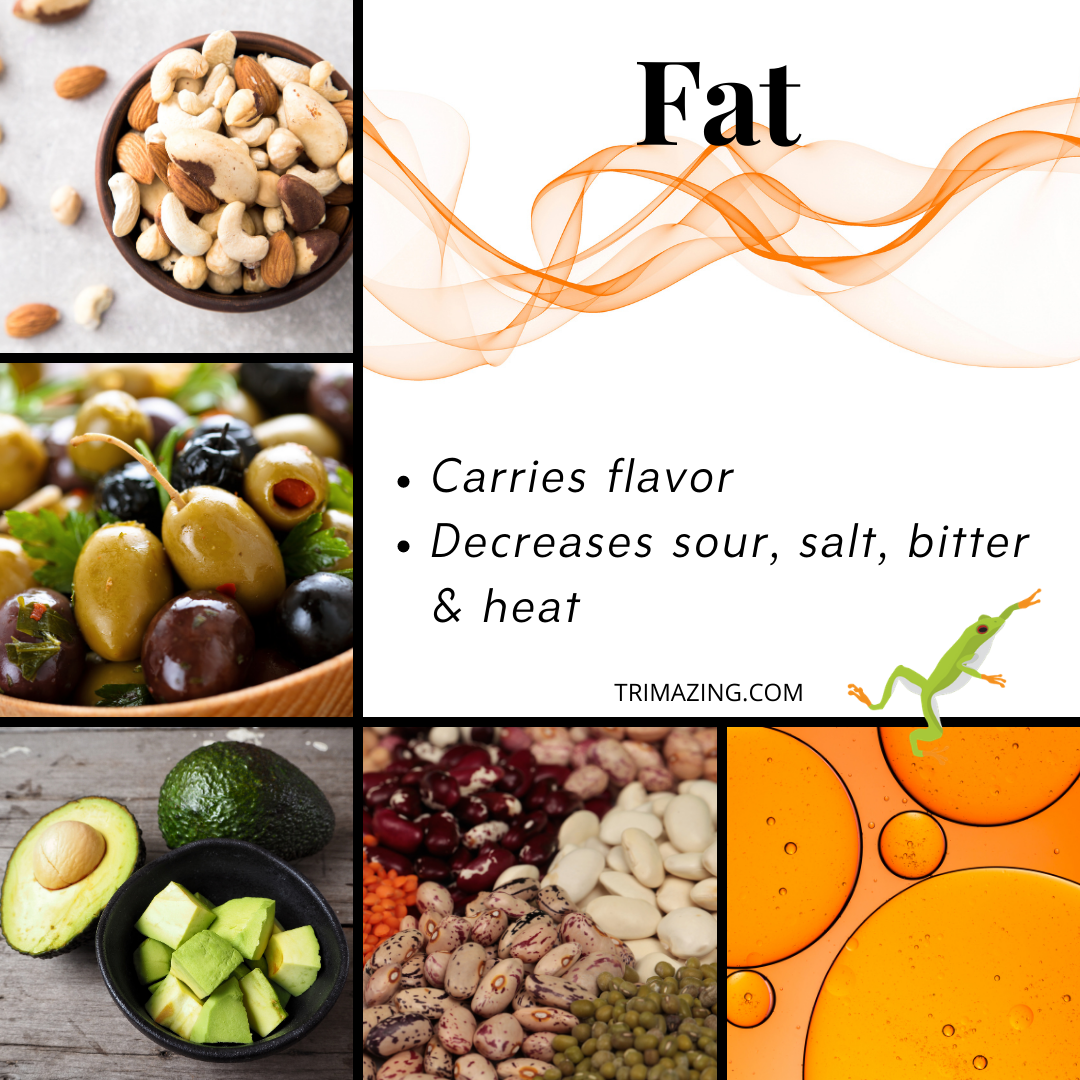
Fat is the newest flavor and the most controversial.
Fat’s found naturally in many plant foods, including:
- Nuts
- Olives
- Avocado
- Legumes
and also refined oil
Culinarily, fat:
- Carries flavor
- Decreases sour, salt, bitter, and heat
Fruit Tastes Sweeter!

An apple…how sweet it is!
Taste is important and is really key to healthy eating. Making dietary changes hinge on taste preferences and can make the transition difficult for some. But patience is key and it doesn’t take long to adjust to a new way of eating. Understanding how different tastes work off of each other can be very helpful in order to make adjustments during this transition.
You can do this, you can retrain your tastes for healthy eating!
My Lose the Quarantine-19: The Power of Food for Healthy Weight class and individual coaching programs are all about this concept. I help with:
- Understanding flavors and how our sense of taste contributes to our food preferences
- Great recipes using the power of flavor
- Time for transitioning your taste buds
- Support as you go through this process
As one client told me last week,
I can’t believe it! I started reducing my sweetened coffee creamer like you suggested, and now I don’t even need sweetener AT ALL. I’m so shocked! I didn’t believe my taste buds could change like that.
And another,
Fruit Tastes Sweeter now! It’s just amazing!
Nope…our bodies are amazing…Trimazing!

Do you like this post? Please share....
If you liked this post, you might like one of these:
Categories:
Tags:

[Trī-māz-ing]
Cindy wants you to be Trimazing—three times better than amazing! After improving her health and fitness through plant-based nutrition, losing 60 pounds and becoming an adult-onset athlete, she retired from her 20-year firefighting career to help people just like you. She works with people and organizations so they can reach their health and wellness goals.
Cindy Thompson is a national board-certified Health and Wellness Coach, Lifestyle Medicine Coach, Master Vegan Lifestyle Coach and Educator, Fitness Nutrition Specialist, Behavior Change Specialist, and Fit2Thrive Firefighter Peer Fitness Trainer. She is a Food for Life Instructor with the Physicians Committee for Responsible Medicine, Rouxbe Plant-Based Professional, and Harvard Medical School Culinary Coach, teaching people how to prepare delicious, satisfying, and health-promoting meals.
She provides health and lifestyle coaching at Trimazing! Health & Lifestyle Coaching. Cindy can be reached at info@trimazing.com.
Subscribe to the Trimazing Blog
Receive occasional blog posts in your email inbox.
Subscribe to the Trimazing Blog
Receive occasional blog posts in your email inbox.

















